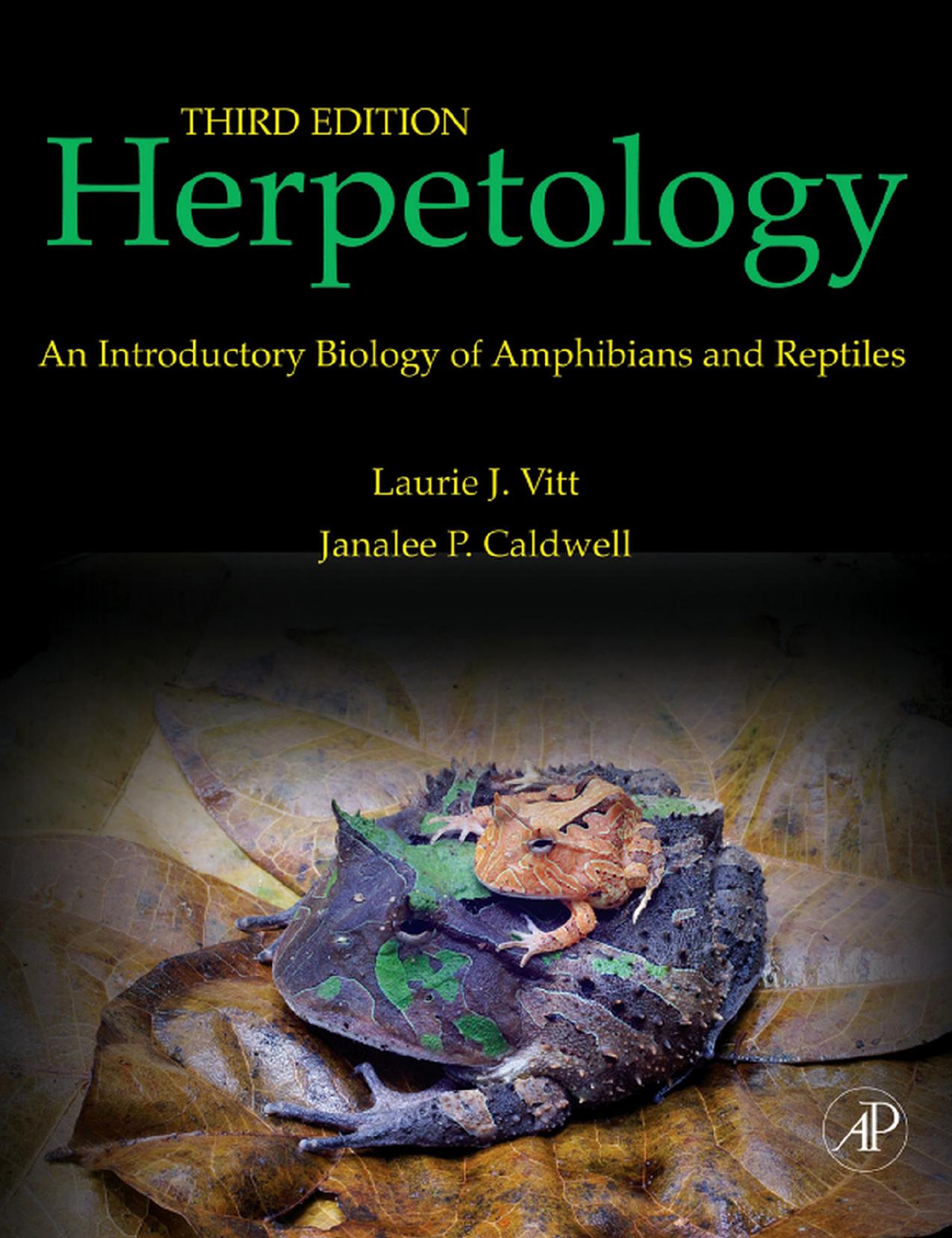Herpetology - An Introductory Biology of Amphibians and Reptiles by Laurie J. Vitt Janalee P. Caldwell

Author:Laurie J. Vitt, Janalee P. Caldwell [Caldwell, Laurie J. Vitt, Janalee P.]
Language: eng
Format: epub, pdf
Tags: gnv64
Published: 2011-03-22T16:30:04+00:00
Chapter | 13 Biogeography and Phylogeography
359
a
a
a
Aust-
SA
ralia
ydur
group
ydur
group
ydur
group
a
a
ys
ys
a
ys
Antarctica
ydur
ynops
ydur
ynops
ydur
ynops
Pseudem
Em
Platem
Phr
Chelus
Hydromedusa
Chelodina
Chelodina
Pseudem
Em
Hydromedusa
Phr
Platem
Chelus
Pseudem
Em
Platem
Phr
Chelus
Hydromedusa
Chelodina
SA
Australia
Time
South America
Southern
South America
continent
Australia
South
Australia
Aust-
America
ralia
Tectonics
Australia
Gaffney
Seddon et al.
Georges et al.
FIGURE 13.8 Comparison of phylogenetic relationships of chelid turtles and their distributions to the tectonics of southern continents. Unfortunately, the most recent cladogram (far right) fails to falsify either of the earlier hypotheses because Chelodina, South American chelids, and remaining Australian chelids form an unresolved polytomy. Cladograms adapted from Gaffney, 1977; Seddon et al., 1997; and Georges et al., 1998.
The Seychelles and chelid examples highlight the neces-
been presented to account for this high diversity. One,
sity of a pluralist approach to biogeographic analysis and of
the Vanishing Refuge Theory (often referred to as the
the need to provide explanations (hypotheses) that can be
Climatic Disturbance Hypothesis), which was originally
tested. Multiple levels of interpretations are likely required
applied to birds and lizards, has received considerable
for the patterns of most herpetofaunas and their component
attention. This hypothesis basically posits that environ-
species. We now examine a subset of the recent analyses that
mental fluctuations during the Pleistocene (2 million to
address questions of historical biogeography of amphibians
10 thousand years before present) resulted in repeated
and reptiles. Each of these provides new insights into old
expansions and contractions of rain forest, resulting in
questions, and each raises additional questions.
repeated isolation of faunas and resultant speciation. Pol-
len profiles from Pleistocene deposits indicate that the rain
forest was both more and less extensive in the past. Other
Recovering History: Phylogenetic
hypotheses include (1) the Riverine Barrier Hypothesis,
Approaches to Biogeography
which suggests that the large rivers in the Amazon basin
were distribution barriers for species living in terra firma
Prior to the use of dated phylogenies, biogeographic scenar-
forest, thus restricting gene flow resulting in divergence
ios were, for the most part, storytelling. The fossils existed,
across rivers; (2) the Ecological Gradients Hypothesis,
present-day distributions existed, and information on his-
which suggests that habitat gradients (e.g., temperature,
toric distribution of continents existed. What was missing
moisture) can serve as sufficient barriers to restrict gene
was the ability to independently date divergence patterns
flow; (3) the Historic Mountain Ridge Hypothesis, in
in taxonomic groups of interest. To put it another way, dis-
which mountain ranges (the Andes in particular) were
tributional histories were simply fitted to the movement of
barriers; and (4) the Marine Incursion Hypothesis, in which
continents. Dated phylogenies have changed that line of
influx of saltwater produced barriers. The lizard example
thinking dramatically, and as previously indicated, histori-
forming the basis for the Vanishing Refuge Theory
cal biogeography has transformed into phylogeography
was the Anolis nitens (formerly chrysolepis) complex. At
with the ability to explicitly test hypotheses. Rather than
the time that this was proposed by Paulo Vanzolini and
summarizing everything that is known about biogeography
Ernest Williams, four subspecies of A. nitens were recogn-
of amphibians and reptiles, we have selected a set of studies
ized, and for the most part, these rain forest lizards had
that make specific points about the process of distributional
nonoverlapping distributions. One subspecies, A. n. brasi-
histories and diversification. We refer the interested reader
liensis, was known from only a few isolated patches of dry
to other sources for detailed and more complete summaries
forest south of the Amazon Basin, and these patches were
of the biogeography of amphibians and reptiles.
believed to be remnants of a once much more wide-
spread Amazon rain forest.
Download
Herpetology - An Introductory Biology of Amphibians and Reptiles by Laurie J. Vitt Janalee P. Caldwell.pdf
This site does not store any files on its server. We only index and link to content provided by other sites. Please contact the content providers to delete copyright contents if any and email us, we'll remove relevant links or contents immediately.
Sapiens: A Brief History of Humankind by Yuval Noah Harari(14166)
The Tidewater Tales by John Barth(12576)
Mastermind: How to Think Like Sherlock Holmes by Maria Konnikova(7164)
Do No Harm Stories of Life, Death and Brain Surgery by Henry Marsh(6840)
The Thirst by Nesbo Jo(6763)
Why We Sleep: Unlocking the Power of Sleep and Dreams by Matthew Walker(6557)
Life 3.0: Being Human in the Age of Artificial Intelligence by Tegmark Max(5405)
Sapiens by Yuval Noah Harari(5264)
The Longevity Diet by Valter Longo(4994)
The Body: A Guide for Occupants by Bill Bryson(4887)
The Rules Do Not Apply by Ariel Levy(4789)
The Immortal Life of Henrietta Lacks by Rebecca Skloot(4447)
Animal Frequency by Melissa Alvarez(4365)
Why We Sleep by Matthew Walker(4317)
The Hacking of the American Mind by Robert H. Lustig(4265)
Yoga Anatomy by Kaminoff Leslie(4248)
All Creatures Great and Small by James Herriot(4190)
Double Down (Diary of a Wimpy Kid Book 11) by Jeff Kinney(4145)
Barron's AP Biology by Goldberg M.S. Deborah T(4062)
